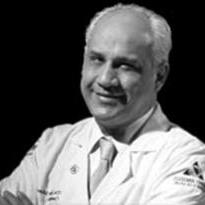CTV News reports that a second Canadian has died after undergoing a noninvasive interventional procedure for Chronic Cerebro Spinal Venous Insufficiency, a syndrome discovered by Italian interventional cardiologist Dr. Paolo Zamboni to be highly correlated to, if not a cause of, multiple sclerosis.
56-year-old Maralyn Clarke from Calagary traveled in April to the United States for the so-called “Liberation” treatment (named because for its ability to ‘liberate’ MS patients from their symptoms). After the procedure she complained to her husband of a severe headache; she died from massive bleeding in the brain hours after the procedure.
Dr. Zamboni hypothesizes that MS patients suffer disproportionately from blocked or twisted veins in the chest and neck, preventing adequate blood flow to the brain. The brain-bound blood instead ‘leaks’ into the body, leaving iron deposits that wreak havoc with patient neurological systems.
The CCSVI intervention procedure is basically a balloon venoplasty in the jugular and azygous veins – – it is identical to the more familiar balloon angioplasty that has been safely practiced in the arteries of cardiology patients for decades, and in this respect is a perfectly safe procedure. Whether or not it is effective has been the source of much discussion and controversy since 2009, when Zamboni first described the CCSVI condition and intervention.
Over the next days and weeks, she noticed remarkable improvements. Her fatigue went away. She walked and climbed stairs more easily, and the color in her face brightened. ~Neelima Raval after CCSVI Intervention at Stanford School of Medicine
Although thousands of MS patients have been treated successfully for CCSVI (including Dr. Zamboni’s wife), with many publicly demonstrating through social networks significant improvement in their MS symptoms, the procedure is still considered unproven and controversial among some Canadian politicians and medical professionals.
Clarke’s story is undeniably tragic: a woman stricken by a debilitating disease dies from the treatment she had such high hopes would give her back enough quality of life to return to work.
However, Clarke’s story should not necessarily be taken as evidence that CCSVI intervention is unsafe; what it (and other reported fatalities related to the CCSVI treatment) does do is highlight the cautions that each MS patient should taken into account when considering a treatment whose efficacy is not yet considered definitively quantified in clinical trial conditions. While the treatment itself (a balloon angioplasty) is fairly standard and known to be safe, there are nevertheless many unknowns – for example, ‘normal’ venous beds are not yet defined/understood as normal arterial beds – that warrant taking certain precautions:
Caution #1: Get treated at a hospital, where you are under the supervision of a physician 24×7. Clarke had her treatment at a clinic; she had been discharged and returned to her hotel where, her husband reports, she complained of a severe headache.
Clarke went to sleep, and when her husband was not able to wake her some hours later, he called 911. Clarke was rushed to the hospital where bleeding in her brain was discovered; she spent several days on life support before dying in the ICU.
The Clarke family provided Canadian news channel CT News with scans of Clarke’s treatment; experts consulted say they show ‘nothing unusual’. An Orange County coroner declared the death due to natural causes. After her death the coroner in Orange County said Clarke’s death was due to natural causes.
Had Clarke been treated at a full-service hospital, precious minutes might have been saved with a neurologist immediately available to respond to her headache.
Caution #2 Get treated under protocol. In Clarke’s care, the clinic where she was treated was not documenting its findings with an institutional review board (IRB), meaning patient results were not being recorded for peer review in the medical literature.
“In my IRB, we would have known about (any potential complications) within 24 hours and we would have investigated it immediately” ~Dr. David Hubbard of the Hubbard Foundation
According to Clarke’s husband, Clarke – who had been on a regime of blood thinners, suffered from a condition called “white coat syndrome” in which patients experience high blood pressure in clinical settings.
“But there was no autopsy.” While CT News’ report made a special point that no autopsy had been performed it must be pointed out that the Coroner typically closes cases that fall under the description “Physician Certified death”, i.e. when a physician has reviewed the circumstances and deemed the death “of obvious natural cause”. If an autopsy is not required by law, it cannot be performed until the deceased person’s family provides permission.
Only a very small fraction of the deaths reported to the Coroner result in a full autopsy. In other words, the lack of autopsy seems to reflect the coroner following established protocol, rather than any general unknowns about the CCSVI intervention procedure.
The first Canadian CCSVI-related fatality was Mahir Mostic, a 35-year-old MS patient who received treatment for CCSVI in Costa Rica and died following a blood clot complication of his stent procedure. Another CCSVI-related death, also including a stent, was reported by Stanford Medical Center
In June , the Canadian government approved funding for clinical trials of CCSVI related to multiple sclerosis on the unanimous advice of the Canadian Institutes of Health Research (CIHR). Last week, Ottawa announced it will fund clinical trials of the CCSVI treatment.
Related Stories:






